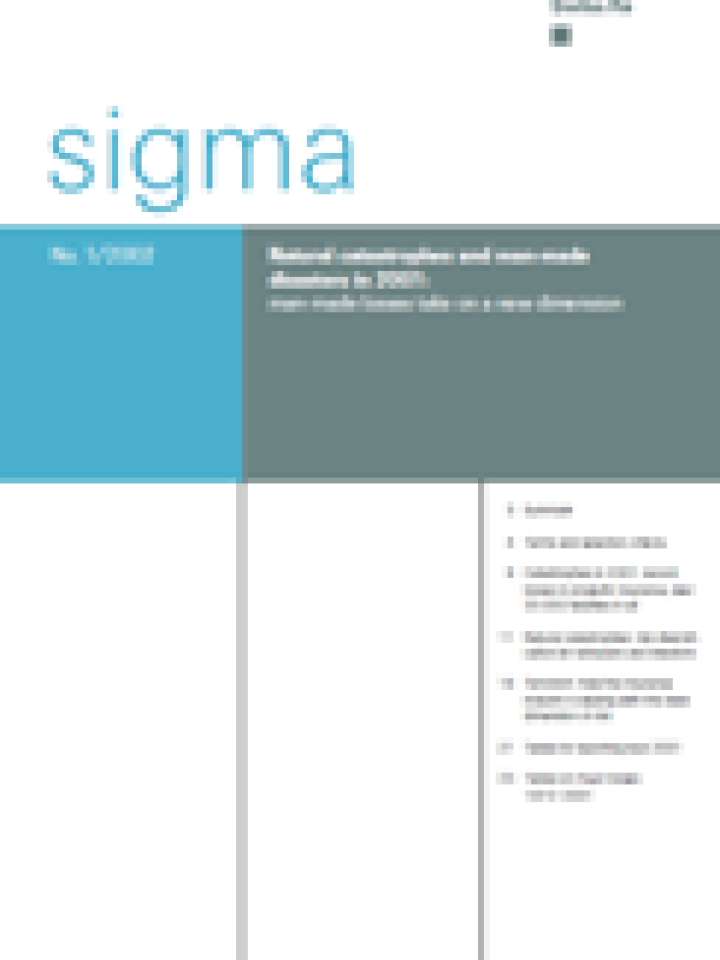Natural catastrophes and man-made disasters in 2001: man-made losses take on a new dimension
Sigma no.1/2002
At USD 34.4bn, the burden on property insurance due to catastrophe losses was extremely high in 2001 , with an estimated USD 19bn incurred by property and business interruption losses arising from the terrorist attack of 11 September. Furthermore, the insurance industry is having to cover liability and life insurance losses related to the attack which are estimated at USD 16.5r39bn. As regards property and business interruption losses, 2001 was only just surpassed as the worst in insurance history by 1992 (Andrew) and 1999 (winterstorms in Europe, eg Lothar). While in 1992 and 1 999 the record losses were due to natural catastrophes, in 2001 it was the man-made losses that weighed heaviest on the insurers' books.
In the long term, it is especially storms, floods and earthquakes that impact the insurance industry for this reason, it is crucially important for reinsurers and investors alike to be able to diversify the natural catastrophe risk. An analysis of historical sigma data indicates that geographic diversification significantly reduces the risk, but that diversification with investment portfolios can help to diminish the risk still further.
In the light of the risk factors in evidence worldwide increasing population densities, higher concentrations of values especially in exposed regions - the trend towards higher losses continues unabated. Add to this the new dimension of large-scale terrorist attacks with their high and complex loss potentials. Direct insurers and reinsurers have taken up the challenge and have developed new approaches: re-assessing insurability and offering special terrorism covers with initial government involvement.
Explore further
